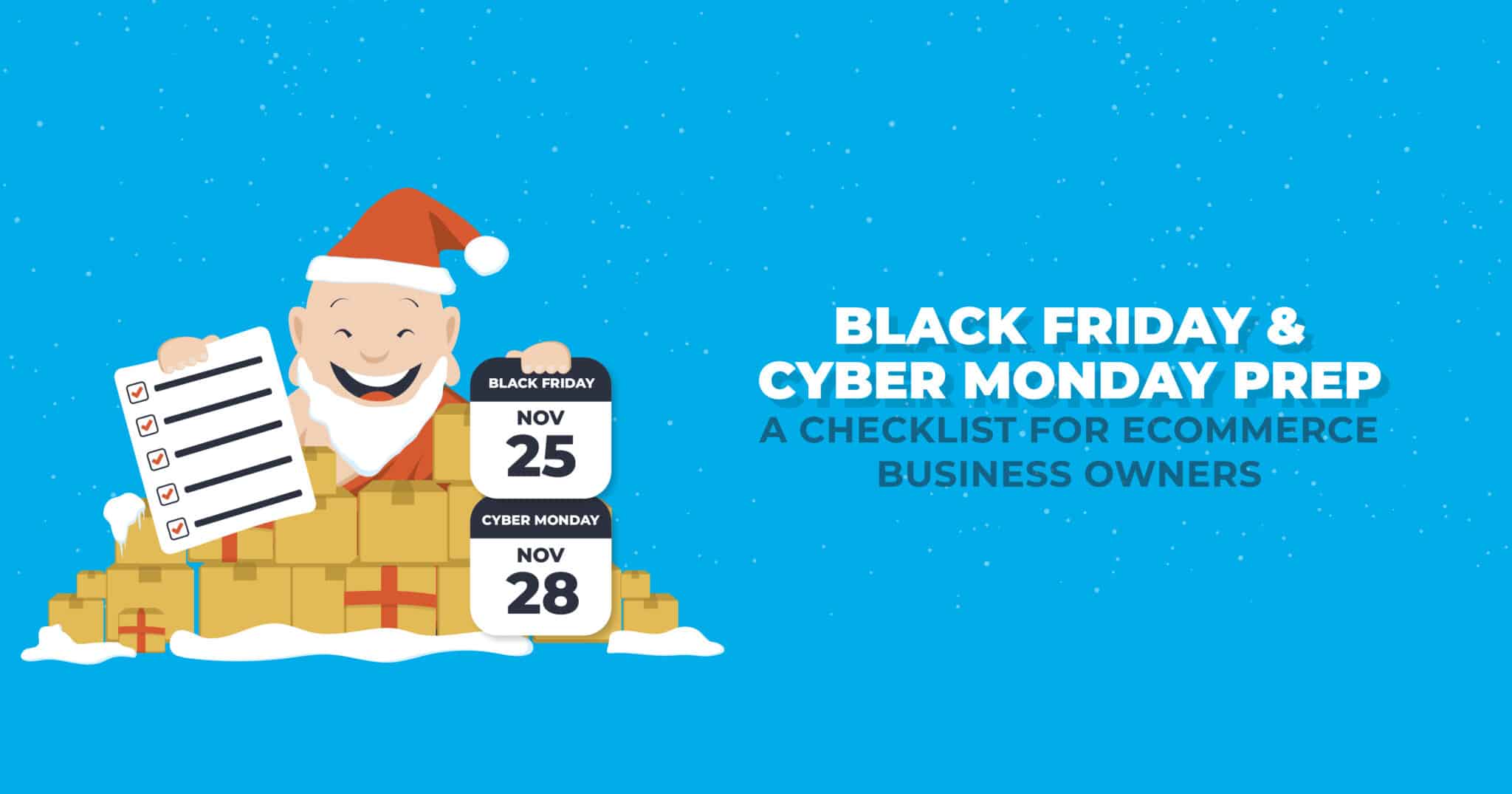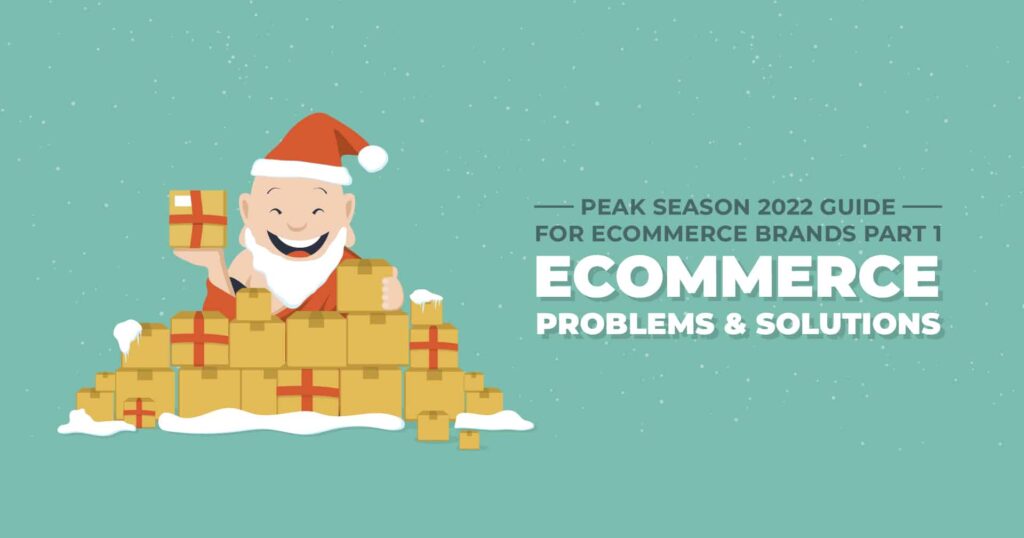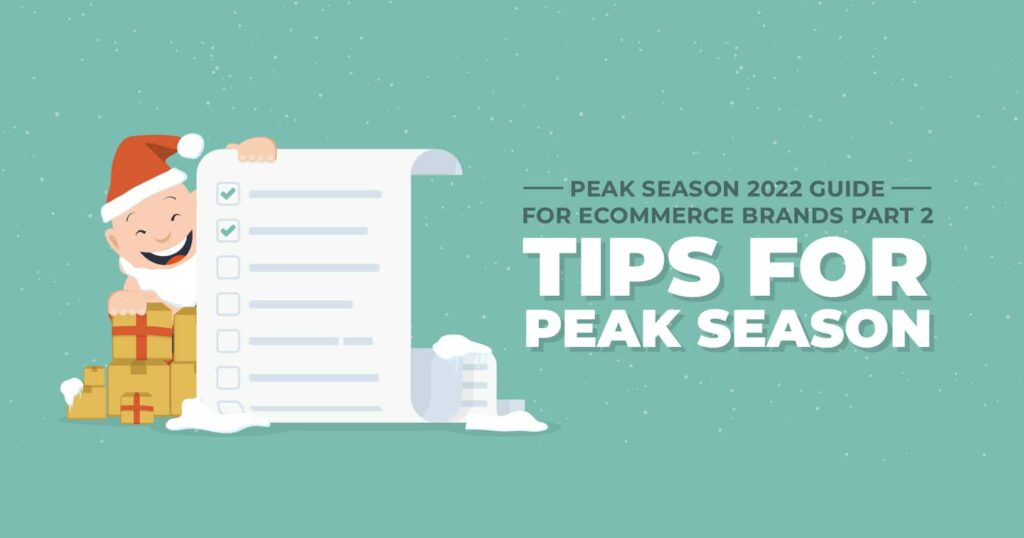Black Friday & Cyber Monday Prep: A Checklist for Ecommerce Business Owners
Cool weather, Lifetime movies, and pumpkin spice. For some, these are the harbingers of the holiday season — a magical time designated for relaxation and spending time with friends and family (and eating way too many cookies). For others, they’re signs of elevated stress levels, which can definitely lead to eating way too many cookies. If that sounds like you, then you’re probably an ecommerce business owner.
While ecommerce has experienced boom after boom, 2022 has proven to be an interesting year in its already storied history. Ecommerce growth is expected to be up about 2.5% vs. 2021, supply chain and freight issues have resulted in numerous inventory challenges, costs have been challenging to predict, and we have entered (and exited) a technical recession whose reach and effects are still to be fully determined.
Here at ShipMonk, we believe that everyone deserves an awesome holiday season without sacrificing the big things or sweating the small stuff. So even though the year has brought more challenges to our forward budgets and forecasts than any in recent memory (well, other than 2020), we’ve compiled this list of 7 MAJOR TIPS to help you make the most out of Black Friday and Cyber Monday.
#1 Plan Ahead… Way Ahead
As an ecommerce business owner, it’s inevitable that you’ll end up making some pretty important decisions on the fly. But when it comes to planning for the holidays, doing it months in advance can save you more than just headaches. Think about it like this: Braving the holiday season without appropriately planning for it is like putting out a house fire with a water bottle. Dramatic, but you get it.
The antidote? A business plan! But this time, with a holiday twist. We don’t recommend throwing out your original business plan, but we do recommend carving out a section dedicated just to the end of the year. Fortunately, this will probably include some topics you’re already familiar with, such as:
- A market analysis
- Roles within the organization
- Product assortment (if adding new products to the catalog)
- A marketing plan (social media, newsletters, campaigns, etc.)
- An advertising strategy and budget
- Financial projections
- Demand forecasting
- Growth strategy (see our guides to growth and scaling your ecommerce business)
See? Slice of cake. Fruitcake.
#2 Analyze Your Past Data and Compare It to Current Trends
How did your ecommerce business’s regular sales compare to seasonal sales last year? When did your sales spike, and when did they return to their normal status? While this information is helpful, it’s still not enough. For a truly successful ecommerce business strategy, you have to dig a little deeper. What did you learn last year? What kind of feedback did you get from your customers? Where did you go wrong — and where did you go right? Being aware of these vital data points will help you consistently improve your strategy year-over-year.
After taking stock of your batting average, aim for the fences by comparing it to the data gathered by other ecommerce business owners and industry professionals. Make sure to consider both general ecommerce trends as well as the individual performance of top companies in your niche.
#3 Get to Know Your Demographic… Again
We typically make the same kind of purchases throughout the year, but when the holidays roll around, it becomes a different story. We not only increase the frequency of our purchases but also the diversity. Inflatable snowmen? Check. Wreaths? Check. Ugly sweaters? Double check.
Before you create your holiday sales strategy, assess your customers one more time, taking special notice of how your Q4 profile differs from Q3, Q2, and Q1. Can you expect the same kind of clientele, or will there be a natural diversification, geographically or otherwise? The answer is generally pretty easy to determine as long as you already have a good understanding of your niche. For example, if you sell fuzzy socks, you’ll likely have ardent fans in New England, but the gift buyers down south will want to be in on it too when the weather starts getting a little cooler. By knowing the best fan base to target, you’ll perfect your marketing strategy and optimize your sales.
#4 Reassess Any Issues Within Your Current Ecommerce Operations
With great growth comes great responsibility. Maybe your ecommerce business model was working just fine a year ago, but can it take the increased pressure of holiday shopping? Even if you think you’re prepared, there are a host of problems that can pop up without the right infrastructure. If you’re unsure of where to start, here are some questions you can ask yourself:
- Do you have enough inventory? Can you make it through projected demand without any hiccups?
- If you’re fulfilling orders in-house, do you have enough storage room, supplies, and materials?
- Are you properly staffed; do you have enough coverage to handle additional shifts, late hours, and other unknowables?
- Which shipping carriers and service levels will you offer? Do you work with multiple carriers? If there is a delay, missed pickup or capacity constraint with one carrier, are you able to quickly reallocate to an alternative option?
- How will you be managing your work and personal life so you don’t get burned out? (Don’t forget, you deserve a great holiday season too!)
The list can be exhaustive, but we often find that most ecommerce business failures can be linked back to miscommunication and mismanagement of alloted resources.
#5 Let Your Customers Know What’s Up
As the calendar inches closer to Black Friday and Cyber Monday (or BFCM as many of us are now calling it), supply chains and shipping carriers are pushed to their limits and will likely struggle to keep up with a massive influx of orders. It’s not just about volume alone — events outside of our control can cause major operational strains to just about every facet of logistics. And if that weren’t enough, holiday orders are typically time-sensitive — it’s Christmas Day after all, not Christmas Week. 😉
To better manage this high demand, shipping carriers impose deadlines. If you partner with a reliable 3PL, they’ll keep you updated on shipping carrier schedules and deadlines so you can set clear expectations with your customers. Ultimately, this serves as more than just useful information — it’s a huge boost in winning the post-purchase funnel by maintaining a clear line of communication and avoiding upset customers.
Speaking of keeping customers updated, why not use this time to do a little marketing? Let customers know about upcoming promotions and add a dash of personalization with your very own branded tracking experience. And if you have to deliver bad news, do it with a smile — and a discount.
#6 Get the Scoop on Surcharges
No one likes paying extra, but in the busiest time of the year, it’s only normal for your wallet to be a little lighter than normal. Think about it: With such a significant spike in order volume (that continues to grow YoY), shipping carriers are often stretched thin when it comes to capacity, infrastructure, and staffing. To recoup those costs, they turn to surcharges, which have a direct impact on your business’s seasonal profitability.
As an ecommerce business owner, you’ve probably already heard of fuel and residential surcharges, but peak season surcharges may be new if this is your first time navigating the holiday-season craziness. While there’s nothing you can do to avoid surcharges completely, you can still make informed decisions about the shipping carriers you partner up with.
The best way to do that? Partnering with a 3PL — seriously! With a tech-enabled 3PL like ShipMonk by your side, you can get discounted rates and automated selections on the best shipping options for your business thanks to our Virtual Carrier Network.
#7 Find the Right Fulfillment Solution
This is the time of the year when your customers are expecting absolute perfection, and failure to comply will lead to at least a few strongly-worded emails. Picking and packing the correct items, using the proper packing materials or dunnage, shipping in a timely manner, optimizing ecommerce shipping carriers based on price and customer location, managing returns and reverse logistics… It’s a science and an art. If you’re good with what you’ve got, no problem! But, if you’re concerned about how you’ll handle the holiday season (and beyond), then you already know who to call — a 3PL!
BFCM Incoming
That’s all for now! We wish you the best of luck as the holiday season draws near. Before you head off to start planning for BFCM, don’t forget to check out our two-part “Peak Season 2022 Guide for Ecommerce Brands.” And if you need a little 3PL help, contact us to speak with an ecommerce fulfillment expert and get a free demo of our proprietary order, inventory, and warehouse management platform!





